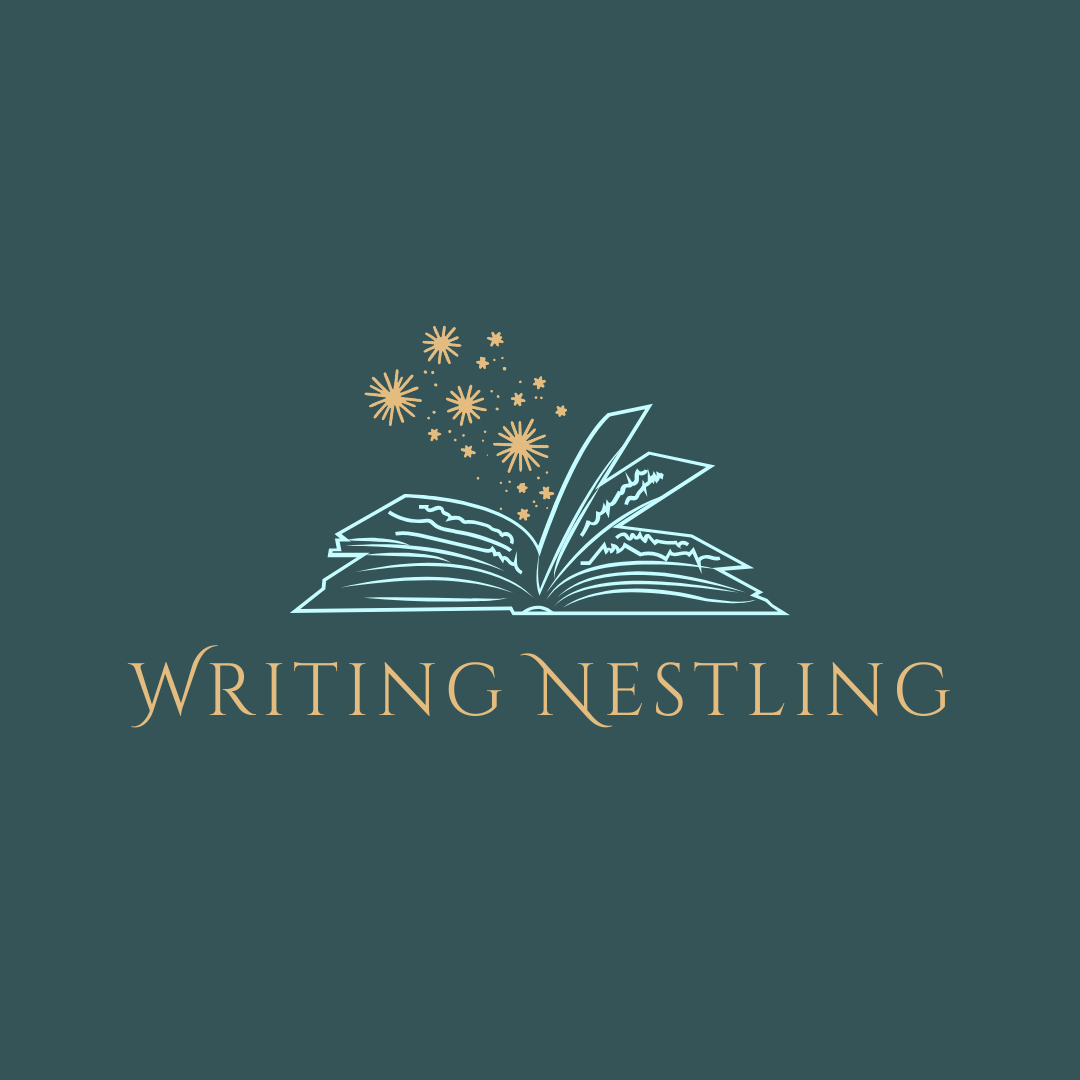Why Does Academic Writing Require Strict Formatting?
Why Does Academic Writing Require Strict Formatting?
Why Does Academic Writing Require Strict Formatting? Academic writing stands as the venerable cornerstone of intellectual discourse, where ideas are cultivated, challenged, and disseminated with meticulous precision.
Amidst the wealth of knowledge conveyed through scholarly prose, the question arises: Why Does Academic Writing Require Strict Formatting? Beyond the superficial confines of fonts and margins, the adherence to stringent formatting guidelines, such as those prescribed by APA, MLA, or Chicago styles, is a deliberate and essential facet of scholarly communication.
This requirement is rooted not in arbitrary rules, but in a profound commitment to clarity, precision, and the preservation of academic integrity.
By exploring the historical context, ethical considerations, and the pragmatic benefits of such formatting standards, we embark on a journey to unravel the profound significance of these rules that govern the craft of academic writing.
Why Does Academic Writing Require Strict Formatting?
Here’s a step-by-step answer to the question “Why does academic writing require strict formatting?”:
Clarity and Organization
Academic writing necessitates strict formatting to ensure clarity and organization of ideas. By adhering to a standardized format, readers can easily locate specific sections such as the introduction, literature review, methodology, results, and conclusion.
Credibility and Professionalism
Strict formatting in academic writing enhances credibility and professionalism. Conforming to recognized style guides, such as APA, MLA, or Chicago, demonstrates a commitment to academic standards and conventions, which are crucial in scholarly communication.
Consistency and Uniformity
Consistency in formatting across different academic papers facilitates comprehension and comparison. Readers familiar with academic conventions can quickly identify key elements, citations, and references, enhancing the coherence of the text and the overall academic discourse.
Accurate Attribution of Sources
Strict formatting ensures accurate attribution of sources through proper citation and referencing. Academic writing relies heavily on the acknowledgment of existing research and scholarly contributions, and adherence to formatting guidelines enables readers to trace the origins of ideas and information.
Respect for Intellectual Property
Academic writing requires strict formatting to uphold principles of intellectual property and academic integrity. Proper citation practices and adherence to copyright guidelines prevent plagiarism and acknowledge the intellectual labor of other researchers and scholars.
Facilitation of Peer Review
In academic publishing, strict formatting facilitates the peer review process by providing reviewers with a standardized framework for evaluating manuscripts. Consistent formatting allows reviewers to focus on the content and methodology of the research rather than being distracted by inconsistent presentation.
Compatibility with Publication Standards
Academic journals and publishers often have specific formatting requirements for submissions. Adhering to these standards increases the likelihood of acceptance for publication and reduces the need for extensive formatting revisions during the editorial process.
Accessibility and Inclusivity
Strict formatting in academic writing promotes accessibility and inclusivity by providing a familiar structure for diverse readership. Clear formatting enhances readability for individuals with visual or cognitive impairments and ensures equitable access to scholarly information.
In summary, strict formatting in academic writing serves multiple purposes, including enhancing clarity, credibility, consistency, and adherence to scholarly standards, while also facilitating effective communication and dissemination of research findings.
Historical Perspective
In the vast tapestry of academic writing, the Historical Perspective stands as the grand architect, weaving threads of tradition and evolution into the fabric of scholarly discourse.
Just as ink has gracefully danced on parchment through centuries, so too have the conventions of academic expression evolved, each era leaving its indelible mark on the narrative of intellectual pursuit.
From the scribes meticulously transcribing ancient scrolls to the digital pioneers shaping the landscape of modern research, the Historical Perspective is a rich tapestry that reveals not just how ideas have been conveyed but also the cultural and intellectual metamorphoses that have shaped the very essence of academic communication.
It’s a journey through quills and printing presses, typewriters and computers—a narrative where the inkwell meets the pixel, and where the past continues to write the future.
Evolution of Academic Writing Standards
The Evolution of Academic Writing Standards is an intriguing journey that reflects the dynamic nature of knowledge dissemination.
Over the centuries, the rigid structures of scholarly expression have undergone a fascinating transformation, adapting to the changing landscapes of education, technology, and societal expectations.
From the classical eloquence of rhetoric to the systematic rigor of the scientific method, academic writing has not merely conformed to established norms but has actively shaped and refined them.
The Renaissance gave birth to a humanistic approach, emphasizing clarity and individual expression, while the Enlightenment championed reason and empirical evidence.
In the modern era, the proliferation of diverse disciplines has led to the development of distinct citation styles, such as APA, MLA, and Chicago, each tailored to the specific needs of various academic communities.
The ongoing evolution of academic writing standards mirrors the relentless pursuit of precision, clarity, and integrity in the quest for knowledge and intellectual progress.
Development of Formatting Guidelines (e.g., APA, MLA, Chicago)
The Development of Formatting Guidelines, exemplified by styles such as APA, MLA, and Chicago, represents a remarkable synthesis of tradition, scholarship, and practicality in academic communication.
These guidelines have emerged as indispensable tools for writers, offering standardized frameworks for organizing and presenting scholarly work across diverse fields of study.
The APA style, rooted in the social sciences, prioritizes clarity, conciseness, and the systematic citation of sources. In contrast, MLA style, originating from the humanities, emphasizes textual analysis, literary criticism, and a nuanced approach to referencing literary works.
The Chicago style, renowned for its flexibility and comprehensive citation system, caters to the needs of historians, scholars in the arts, and professionals in publishing.
Beyond mere conventions, these formatting guidelines embody principles of intellectual honesty, precision, and respect for the scholarly tradition.
As dynamic as the disciplines they serve, the development of formatting guidelines continues to adapt to the evolving landscape of academic inquiry, ensuring the continuity and integrity of scholarly discourse across generations.
Communication of Ideas
In the symphony of academia, the Communication of Ideas takes center stage as the virtuoso conductor, orchestrating a harmonious blend of clarity, precision, and intellectual resonance.
Like a linguistic alchemist, academic writing transforms abstract thoughts into tangible expressions, weaving a narrative that transcends the boundaries of disciplines.
It is a dance of words, where each sentence pirouettes with purpose, ensuring that ideas are not just conveyed but celebrated. The nuances of language become a palette, and every well-structured paragraph is a stroke that paints the canvas of intellectual discourse.
In the grand theater of scholarly communication, the spotlight shines not only on the brilliance of ideas but also on the artistry with which they are conveyed—a performance where the pen is mightier than the sword, and every word resonates like a finely tuned note in the symphony of human knowledge.
Clarity and Precision
In the realm of academic writing, Clarity and Precision emerge as the unsung heroes, meticulously crafting a path through the labyrinth of ideas.
Like the steady beam of a lighthouse cutting through the fog, clarity ensures that the reader navigates the discourse with ease, unhindered by ambiguity or confusion.
Precision, on the other hand, sharpens the intellectual blade, honing ideas to their essence and distilling complexity into concise brilliance.
Together, they form the dynamic duo that transforms abstract concepts into crystalline prose. Clarity and precision are the architects of understanding, constructing a bridge between the author’s mind and the reader’s comprehension.
In the symphony of words, they play the melody that resonates long after the last sentence has been read, leaving an indelible mark on the landscape of scholarly communication.
Consistency in Expression
Consistency in Expression is the hallmark of a well-crafted piece of academic writing, akin to the steady rhythm in a musical composition.
It is the glue that binds ideas together, creating a seamless flow that guides the reader through the intellectual terrain. Whether through the standardized presentation of information or the uniform use of language, consistency ensures that the narrative unfolds with clarity and coherence.
Like the brushstrokes of a master painter, consistent expression brings a sense of order to the canvas of ideas, allowing the reader to focus on the substance rather than being distracted by stylistic variations.
It is the silent conductor in the background, orchestrating a symphony of words that resonates with reliability and professionalism.
In the intricate tapestry of academic communication, consistency becomes the invisible thread that stitches disparate thoughts into a cohesive and compelling narrative.
Academic Integrity
Academic Integrity, the unwavering sentinel of scholarly pursuits, stands as a beacon in the vast seas of knowledge. It is the guardian of intellectual honesty, challenging every mind to explore the realms of discovery with integrity as its compass.
Academic integrity is not a mere set of rules; it is a sacred pact between the scholar and the pursuit of truth. It beckons researchers to traverse the academic landscape with transparency and accountability, shunning the shadows of plagiarism and embracing the brilliance of original thought.
It is the north star by which the academic community navigates, reminding us that the true measure of intellectual achievement lies not just in the destination but in the authenticity of the journey.
In a world where information flows like a river, academic integrity stands as the bedrock, ensuring that the waters of knowledge are pure, untainted, and eternally reliable.
Prevention of Plagiarism
Prevention of plagiarism stands as the ethical cornerstone of academic integrity, safeguarding the sanctity of scholarly discourse. It is a vigilant sentinel, tirelessly patrolling the corridors of knowledge to ensure that every idea finds its rightful attribution.
Plagiarism prevention requires not just adherence to citation protocols but a deep commitment to intellectual honesty and originality.
By acknowledging the contributions of those who came before and paving new paths of inquiry, scholars uphold the sacred covenant of academic integrity.
In the digital age where information flows freely and boundaries blur, the prevention of plagiarism becomes an even more crucial endeavor, demanding a vigilant eye and an unwavering dedication to the pursuit of truth.
Like the custodian of a treasure trove, plagiarism prevention ensures that the jewels of knowledge remain untarnished and accessible to all who seek enlightenment.
Ethical Considerations
Ethical considerations serve as the moral compass guiding scholarly endeavors, reminding researchers that the pursuit of knowledge is not divorced from a responsibility to humanity.
In the intricate tapestry of academic exploration, ethical considerations are the threads that weave integrity into the fabric of discovery.
Researchers are tasked with the ethical stewardship of their work, ensuring that their inquiries contribute positively to society and respect the dignity and rights of all involved.
This ethical compass extends beyond the avoidance of misconduct to embrace a commitment to fairness, transparency, and the well-being of participants and communities.
It’s a call to conscientious reflection, urging scholars to navigate the intricate ethical terrain with sensitivity, empathy, and an unwavering commitment to the highest standards of moral conduct.
In the realm of academia, ethical considerations are not just a guideline; they are a fundamental principle that upholds the noble purpose of knowledge-seeking for the betterment of humanity.
Professionalism
In the bustling marketplace of ideas, Professionalism emerges as the esteemed artisan, meticulously crafting scholarly contributions with precision and dedication.
It is more than a suit-and-tie formality; it is the essence that elevates academic discourse to a realm of sophistication. Professionalism beckons writers to wield their pens with the grace of a calligrapher, ensuring that every sentence is a testament to competence and expertise.
It is the silent conductor in the symphony of research, orchestrating a harmonious blend of thoroughness, clarity, and intellectual rigor.
Like a compass pointing true north, professionalism guides scholars through the challenging landscapes of academia, reminding them that the pursuit of knowledge is not just a solitary journey but a collective endeavor that demands respect, courtesy, and a commitment to excellence.
In the realm of ideas, professionalism is the currency that distinguishes mere contributors from true custodians of knowledge.
Conveying a Scholarly Image
Conveying a scholarly image is akin to crafting a masterpiece where every brushstroke counts. It transcends the academic wardrobe or the eloquence of language; it’s an art that emanates from a profound commitment to intellectual depth and authenticity.
Scholars, as image-bearers of knowledge, are tasked with the responsibility of presenting their work with gravitas and precision.
This extends beyond the confines of formal attire to the meticulous construction of arguments, the thoroughness of research, and the adherence to ethical standards.
A scholarly image is a beacon that signals not only expertise but also a dedication to the rigorous pursuit of truth. It’s an unspoken pact with the audience, promising a journey through the realms of profound understanding and thoughtful engagement.
In the tapestry of academia, conveying a scholarly image is not a superficial endeavor; it’s an intrinsic facet of the legacy scholars leave behind, inviting others to follow the footsteps of intellectual curiosity and scholarly excellence.
Facilitating Peer Review
Facilitating peer review is the scholarly crucible where ideas are refined, polished, and tested under the discerning gaze of academic scrutiny.
It is not just a procedural step; rather, it is a crucial stage in the evolution of knowledge, where colleagues engage in a constructive dialogue to bolster the rigor and credibility of scholarly work.
Peer review serves as the intellectual marketplace, where ideas are bartered, critiqued, and sometimes, reshaped.
It’s a dynamic process that demands a delicate balance between constructive criticism and supportive encouragement.
The facilitation of peer review is not just about maintaining academic standards; it is about fostering a community of thinkers who collectively contribute to the advancement of their respective fields.
It’s a testament to the collaborative spirit of academia, where scholars, bound by a common commitment to excellence, lend their expertise to fortify the foundations of shared knowledge.

Compatibility with Publishing Standards
Compatibility with publishing standards is the academic passport that transforms a manuscript from a solitary work of brilliance into a globally recognized contribution to human knowledge.
It is the secret handshake that opens the doors to scholarly journals, ensuring that ideas not only stand on their own merit but also align with the universal language of academia.
Like a well-choreographed dance, compatibility with publishing standards requires authors to follow the intricate steps of citation, formatting, and ethical considerations.
It’s the backstage pass to the grand theatre of dissemination, where manuscripts undergo scrutiny not only for their intellectual depth but also for their adherence to the protocols that govern the world of publishing.
In the labyrinthine landscape of academic excellence, compatibility with publishing standards is the compass that navigates manuscripts through the intricate paths of peer review, ensuring they emerge not just as solitary beacons of brilliance but as shining stars in the constellation of shared human understanding.
Journal and Publisher Requirements
Journal and publisher requirements serve as the guiding pillars in the labyrinth of scholarly communication, setting the standards that manuscripts must adhere to for entry into the hallowed realms of academic publication.
Journals, akin to literary gatekeepers, lay down the criteria that manuscripts must meet to be considered for publication, demanding not only intellectual rigor but also alignment with the journal’s thematic focus.
Meanwhile, publishers act as custodians of quality and professionalism, ensuring that accepted manuscripts conform to established norms of formatting, citation, and ethical considerations.
Navigating these requirements is akin to a dance, where authors must harmonize their intellectual compositions with the symphony of guidelines laid out by journals and publishers.
It’s a symbiotic relationship, where authors seek the prestige of a reputable journal, and in turn, journals and publishers seek manuscripts that enhance their scholarly standing.
In the intricate ecosystem of academic dissemination, adherence to journal and publisher requirements becomes the key that unlocks the gateway to a wider audience and the acknowledgment of peers.
Inclusion in Academic Archives
Inclusion in academic archives is the triumphant entry into the hallowed halls of scholarly perpetuity. It signifies the acknowledgment of a work’s enduring value and contribution to the collective tapestry of human knowledge.
Academic archives are the guardians of intellectual heritage, preserving manuscripts for posterity and offering a timeless repository for future generations of scholars.
Inclusion in these archives is not merely a stamp of approval; it is an invitation for a manuscript to join the ranks of revered works that stand as pillars of insight, innovation, and academic excellence.
It ensures that the fruits of scholarly labor transcend temporal confines, becoming a part of the enduring narrative that shapes the ever-evolving story of human understanding.
To be included in academic archives is not just a recognition; it is an investment in the perpetuity of ideas, allowing them to echo across the corridors of academia for generations to come.
Facilitating Communication in the Academic Community
Facilitating communication in the academic community is akin to orchestrating a grand intellectual symphony, where ideas harmonize and resonate across the corridors of knowledge.
It’s not merely about exchanging information; it’s about fostering a vibrant dialogue that transcends disciplinary boundaries and cultivates a shared understanding.
Like a cosmic network of neurons firing in unison, communication in academia connects minds, sparking new perspectives and catalyzing the evolution of thought.
It’s the cosmic dance where researchers, irrespective of geographical distances or specialized domains, engage in a celestial conversation that propels the collective intellect forward.
In this cosmic ballet, facilitating communication is not just an act of scholarly camaraderie; it’s the pulsating heartbeat that sustains the intellectual ecosystem, turning the academic community into a dynamic and interconnected cosmos of ideas.

Universal Standards
Universal standards in academia are the invisible threads that weave a tapestry of consistency and coherence across the diverse landscape of knowledge.
They serve as the common language, transcending disciplinary borders and geographic distances, creating a shared platform for intellectual exchange.
Whether manifested in the standardized citation styles like APA, MLA, or Chicago, or in the universal principles of ethical conduct, these standards form the backbone of scholarly communication.
Universal standards ensure that a research paper penned in one corner of the globe can seamlessly converse with the intellectual output from another, fostering a global community bound by a commitment to excellence and a shared pursuit of truth.
In this intricate dance of ideas, universal standards become the unifying force that transforms isolated contributions into a collective symphony of human understanding, echoing across generations and civilizations.
Ease of Understanding
Ease of understanding is the luminous beacon that guides scholarly communication through the intricate terrain of complexity. In the realm of academia, where ideas can be as profound as they are intricate, the art of presenting information with clarity becomes paramount.
Like a well-crafted map, ease of understanding ensures that the reader navigates through the intellectual landscape effortlessly, unraveling the intricacies of complex concepts without getting entangled in unnecessary jargon.
It is the bridge that connects the author’s insights with the reader’s comprehension, transforming intricate theories into accessible narratives.
Ease of understanding is not a compromise on depth; instead, it is the hallmark of effective communication, inviting a diverse audience to engage with and appreciate the richness of scholarly contributions.
In this quest for clarity, the beauty of ideas shines through, transcending the barriers of specialization and fostering a broader, more inclusive dialogue in the academic realm.
Technological Advancements and Digital Formats
In the dynamic symphony of academia, technological advancements and digital formats compose the futuristic overture, heralding a transformative era where the quill meets the pixel.
Like sorcerers wielding electronic wands, scholars harness cutting-edge tools, from citation management software to online publishing platforms, to breathe life into their intellectual creations.
The dance of ideas extends beyond the traditional parchment, embracing the fluidity of digital formats that not only enhance accessibility but also invite a multimedia crescendo.
In this digital odyssey, footnotes become hyperlinks, and manuscripts transform into interactive landscapes where knowledge sprouts, evolves, and resonates across virtual realms.
Technological advancements and digital formats are not just tools; they are the enchanting spell that propels academia into a realm where the pursuit of knowledge aligns seamlessly with the rhythm of the digital age—a harmonious duet where innovation and intellect dance hand in hand into the future.
Compatibility with Modern Tools
Compatibility with modern tools is the symbiotic dance where the traditional and the contemporary tango seamlessly, propelling scholarly endeavors into the digital age.
As the academic landscape evolves, researchers find themselves navigating not just libraries but digital repositories, and compatibility with modern tools becomes the compass guiding this journey.
Whether embracing citation management software, collaborative online platforms, or sophisticated data analysis tools, scholars are empowered to transcend the limitations of the past.
It’s a marriage of tradition and innovation where the quill is complemented by the keyboard, and the scholarly discourse spans the pages of dusty tomes and the limitless expanse of the internet.
In this symbiosis, compatibility with modern tools is not just a convenience; it is the bridge that connects the wisdom of antiquity with the technological prowess of the present, ensuring that the pursuit of knowledge remains agile, dynamic, and endlessly transformative.
Frequently Asked Questions (FAQ) about Why Does Academic Writing Require Strict Formatting?
Why does academic writing have specific formatting guidelines?
Academic writing employs strict formatting to ensure a standardized and clear presentation of ideas. Consistent formats facilitate effective communication, making it easier for readers to comprehend and navigate complex information.
Do different academic disciplines follow the same formatting rules?
No, various disciplines often have their own set of formatting guidelines. For instance, the sciences may adhere to APA style, while the humanities may prefer MLA. These distinctions aim to cater to the unique needs and conventions of each field.
How does strict formatting contribute to academic integrity?
Strict formatting, including proper citation practices, safeguards against plagiarism and ensures that authors give due credit to the sources that influenced their work. It reinforces ethical conduct within the academic community.
Is formatting more than just an aesthetic requirement in academic writing?
Absolutely. Beyond aesthetics, formatting serves functional purposes. It enhances readability, aids in the organization of information, and assists in maintaining a cohesive structure, all contributing to effective knowledge transfer.
Why do academic journals and publishers enforce specific formatting rules?
Journals and publishers uphold strict formatting to maintain consistency across their publications. It streamlines the editorial process, ensures professionalism, and aligns the manuscript with the expectations of the targeted audience.
How have technological advancements influenced academic formatting?
Technology has introduced new tools for formatting and presenting scholarly work, from digital citation managers to online publishing platforms. These advancements streamline processes and adapt academic writing to the digital age.
Can adherence to formatting standards impact the acceptance of a manuscript?
Yes, many academic journals and publishers prioritize adherence to formatting standards during the review process. Conforming to these guidelines can positively influence the reception and acceptance of a manuscript.
Is there flexibility within formatting rules, or are they rigidly enforced?
While there is a degree of flexibility, deviations are often discouraged to maintain consistency and professionalism. Striking a balance between adherence to standards and adapting to specific requirements is essential.
How do formatting standards contribute to cross-disciplinary communication?
Universal formatting standards foster effective cross-disciplinary communication by providing a common language and structure. They facilitate collaboration and ensure that diverse academic communities can engage seamlessly.
Are there ongoing changes in academic formatting standards?
Yes, formatting standards evolve over time. Academic institutions, publishers, and organizations periodically update guidelines to adapt to changes in research practices, technology, and the evolving landscape of academic communication.
Conclusion
In conclusion of Why Does Academic Writing Require Strict Formatting, the insistence on strict formatting in academic writing emerges as a vital and multifaceted aspect of scholarly communication.
Far beyond a mere imposition of rules, these formatting guidelines serve as the scaffolding that supports the intricate edifice of academic discourse.
From enhancing clarity and preserving intellectual integrity to fostering professionalism and facilitating cross-disciplinary communication, adherence to strict formatting is a conscious commitment to the highest standards of excellence.
As technology continues to reshape the landscape of academia, these standards evolve, ensuring that the timeless principles of precision, transparency, and accessibility remain at the forefront of the scholarly endeavor.
In essence, the call for strict formatting is not a constraint but a celebration—a celebration of the enduring pursuit of knowledge and the collective responsibility to communicate it with clarity and integrity across the vast and ever-expanding realms of intellectual inquiry.






